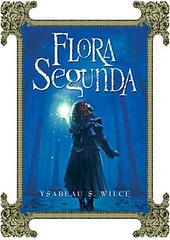Readers with good memories will remember that more than one character in Flora Segunda spent time under a geas. Valefor, of course, was under a geas not to speak Gramatica and the Dainty Pirate was under a geas not to practice any magick at all.
What's a geas?
Originally, to be under a geas meant that you were required to do something, under pain of horrible dire consequence if you did not. Later, the word morphed into the idea that you were required not to do something, under pain of horrible consequence--usually death. In Irish mythology, geasa are oft laid upon people un-awares; they don't know they are under a ban under they've already broken the ban--which seems a bit unfair. (No one ever said obligation was fair.)
The word is of Celtic origin, and I first came across it in the Táin Bó Cúailnge, (The Cattle Raid at Cooley), the great Irish epic, where various heroes, at various times, end up under various geas. Cuchulainn, for example, is at one point under a geas not to eat dog meat, but he's also under a geas not to refuse food. So when he is offered dog meat to eat--well--he's in a bit of a pickle. (No one ever said obligation was easy.)
By the way, if you haven't read the Tain, I recommend it highly, particularly Thomas Kinsella's translation. Though the hero of the story is Cuchulainn, The Tain is full of wonderfully furious women, including Queen Medb, whose desire to acquire the famous bull Finnbhennach kicked off the cattle raid; Scathach, the warrior who teaches Cuchulainn how to be a hero; Aife, the equally kick-hinder fighter who becomes Cuchulainn's lover; and Badb, the Scald Crow goddess of war. It's a vigorous story, full of incredible language and lots of bloody action. Just as good as any Greek epic--maybe even better.
Wednesday, March 7, 2007
Subscribe to:
Post Comments (Atom)











1 comment:
Everyone who played D&D as a kid knows exactly what a geas is. 6th level spell, I believe. Without D&D I wouldn't know what dweomer or electrum meant, either
Post a Comment